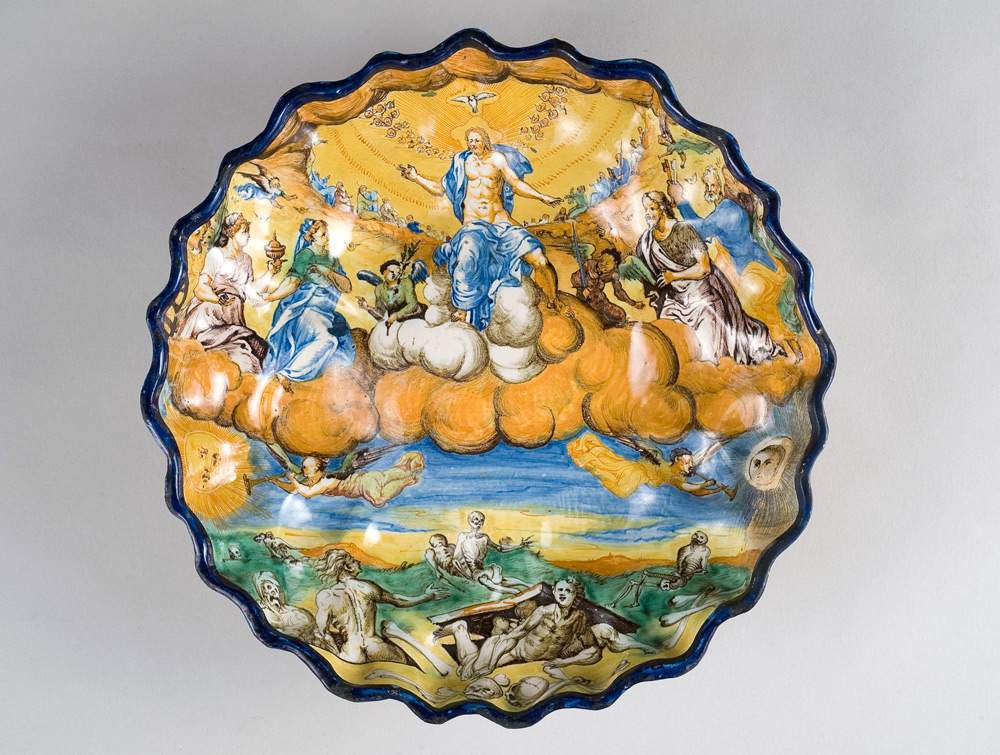From March 16 to July 28, 2019, Montelupo Fiorentino celebrates the centuries-long history of its ceramics with the exhibition Di tutti i colori (Of All Colors), an important review that through 120 works traces eight centuries of history, from 1200 to the present day, in the two venues of the Palazzo Podestarile and the Museum of Ceramics. The exhibition, which right from its title aims to emphasize the multicolored beauty of Montelupo ceramics, is also enriched with multimedia interventions and archival materials.
As is well known, the art of ceramics characterizes the village of Montelupo Fiorentino: Montelupese ceramics became particularly famous between the 15th and 16th centuries, at the height of the Renaissance, when all the noble Florentine families wished to have in their homes at least one artifact coming from Montelupo, created by the masters of the “Factory of Florence” (Montelupo is in fact a short distance from the capital). It was customary that when a wedding was celebrated between young people of high lineage, services of hundreds of pieces bearing the coats of arms of the patrons were ordered. It was precisely the color that made Florentine families (and not only: the ceramics were in fact appreciated by institutions as well) eager to procure Montelupese ceramic pieces. It is precisely the search for color that makes Montelupese ceramics unique: “color,” stresses Alessandro Mandolesi, scientific director of the Montelupo Fiorentino Museum System and curator of the exhibition together with Marina Vignozzi Paszkowski, curator of the Bitossi Historical Archives, “becomes in the exhibition an important key to understanding Montelupese ceramics, represented by a selection of works exhibited at the Palazzo Podestarile (built with loans from important public and private collections) conceived as a foretaste of the in-depth itinerary set up in the nearby Museum of Ceramics. Here, too, a thematic itinerary has been prepared that offers a series of ’ceramic tales’ related to the subjects painted on the glazed surfaces, transformed into ’speaking’ elements to reveal facts, curiosities and social meanings of the time. The osmosis between objects of ’color’ and objects of ’narrative’ offers a more intuitive and engaging overview of past productions, played on both the communicative and emotional register, thanks also to some technological interventions.”
The exhibition begins with a section that reconstructs the history of Montelupo ceramics through the different use of colors in the various eras. In Montelupo, in fact, continuous experimentation was performed, supported by the achievements of the great Florentine art, and based on a continuous and refined figurative research enlivened by an unparalleled choice of colors. These ranged from the green-brown-medieval (from the copper-manganese oxides) to the blue-blue of Humanism (cobalt oxide), from the yellow-gold of the late 15th century to the unparalleled “Montelupo red” of the mature Renaissance. A set of hues that consolidated into a unique chromatic tradition and that found, in the seventeenth century, an amusing and original manifestation in the so-called “harlequins,” or plates made of bright colors on which characters of the time were painted revisited in a caricatured tone, an ironic expression of the popular culture of the time. The first section also delves into the rich presence of tales, symbols and curiosities that ceramic depictions have handed down: among them, for example, the mug on loan from the Bargello Museum in Florence with the coat of arms of the Medici and Salviati families, whose emblem is included inside a large diamond ring, probably celebrating the marriage between the condottiere Giovanni delle Bande Nere and Maria Salviati, niece of the Medici pope Leo X, which took place in 1516, from whose union Cosimo I, the future Grand Duke of Tuscany, would be born.
The second section focuses on the representation of Florentine style and taste in nineteenth- and twentieth-century ceramics: here, the narrative is inserted into the history of modern Tuscan society, with objects flanked by images, multimedia projections and sounds, capable of exalting the salient themes of the production path, midway between tradition and innovation, as well as the significant artistic and commercial contribution, made primarily of ideas and artifacts, that Montelupo’s ceramic production has offered up to the present day. Prominent among the themes addressed are the rebirth of ceramics through the activity of an artist like Raffaello Fanciullacci and the recovery of historical tradition, as well as the new trends declined in the main twentieth-century manufactures (Bitossi, Corradini, Corti, Gianni) and the production of artistic majolica (Raphaelesque, Robbiani, and istoriato) also represented by sketches and drawings; the reconstruction and commercial developments through productions of artistic ceramics and design; the stylistic strands of modern-style ceramics of the 1950s and the mass-produced ceramics of the 1960s and 1970s; the images of color and lines of extraordinary creativity that characterized the 1980s, those of “pop” design, of post-modernism in which an elite market was being sought.
The exhibition is sponsored by the Montelupo Museum Foundation, with the contribution of the Fondazione Cassa di Risparmio di Firenze. The catalog is published by All’Insegna del Giglio (Sesto Fiorentino). Visiting hours: Tuesday through Sunday from 10 a.m. to 7 p.m., closed Monday. Tickets: full 5 euros, reduced 1 to 4 euros. A visit to the Museum of Ceramics is also included in the ticket price. For more information you can visit the Montelupo Ceramics Museum website.
Pictured: Crespina depicting the Resurrection of the Dead (Montelupo 1575-1580; ceramics; Brescia, Complex of San Salvatore and Santa Giulia)
Source: release
 |
| Nine centuries of Montelupo Fiorentino ceramics. The major exhibition with 120 works from 1200 to the present day. |
Warning: the translation into English of the original Italian article was created using automatic tools. We undertake to review all articles, but we do not guarantee the total absence of inaccuracies in the translation due to the program. You can find the original by clicking on the ITA button. If you find any mistake,please contact us.